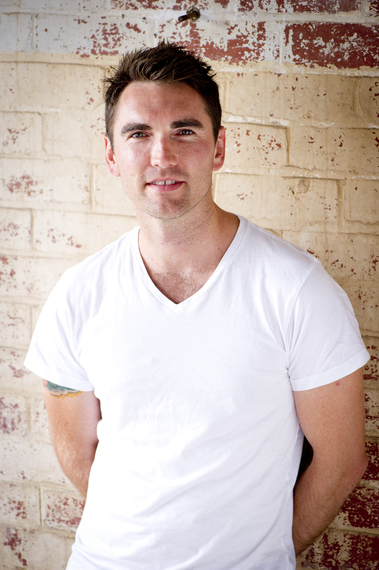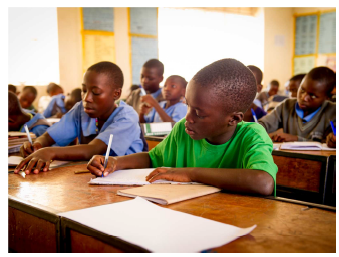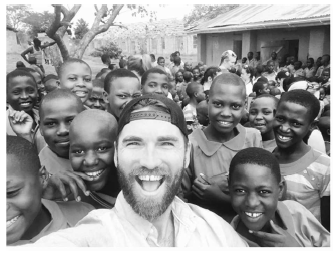Paradigm Shifters is a series of interviews with a select group of women and men from eclectic walks of life. It will highlight unspoken, real-life insights on how they have been able to turn weakness into strength. A naked soul point of view of how their breakdowns were really a preparation for breakthroughs. They are your quintessential paradigm shifters; internal shifts converted into genuine change.
Everything I have ever done has been focused on this underlying theme of shifting the paradigm because, "What we think determines what we feel and what we feel determines what we do." Hence, why Empowered by You takes lingerie, which has traditionally been seen merely as a tool of seduction and redirected that energy as a tool of empowerment.
I hope from these stories you will look at your own situations, struggles and accomplishments through a different lens. At the very least you will be more equipped with real life tools to change your own paradigm. At the end of the day, we are our own Alchemist turning the silver we were born with into the gold we are destined to become.
Tim Diamond - General Manager , The Cotton On Foundation
You studied sports management and marketing. How did you end up in sustainable charity with the Cotton On Group?
Before joining the Cotton On Group, I had some initial experience in the world of nonprofits.
I met the Group's Founder Nigel Austin by chance through a mutual friend and at that time the business was quite small. Lucky enough, I was in the right place at the right time and in 2007 Nigel asked me to help out with some community projects he had locally in Australia. I did that for about six months. During that time, Nigel was asked by his local Parish to make a donation to a healthcare center in the small and remote village of Mannya in Southern Uganda.
Keen to follow his dollar, Nigel took a trip to Mannya where he not only fell in love with this little village, but identified a world of opportunity to make a much needed difference to peoples' lives there.
He said I needed to visit, so I hopped on a plane and spent three weeks there. My first morning, this incredibly welcoming man, Father Nestus, the local leader and Parish Priest took me around the village in the pouring rain. We got close to a mud brick hut and I remember thinking, it must be someone's house, but as I looked in there were about 30 children huddled up in the corner and a beautiful African woman--a mother in the village--was teaching the children. This was their local school. These kids were sitting on this dirt that was turning to mud because of the holes in the roof, their paper was wet, and they had broken pencils and no shoes. It was confronting.
I sat there the whole morning watching these kids listen intently and the teacher was so inspired. I walked back with an eleven-year-old boy named Paul to his house. It was immaculate--so well kept and well built. I asked if I could thank his parents for letting me visit and he informed me that his father had passed away years ago and his mother just recently from Aids. I was completely gutted. Then I heard these voices and it was Paul's little brother and sister, around four or five years old. Here he is, eleven years old, he's got to look out for his siblings and find water and food but he still has this resilience to get up and walk two kilometers to school in the pouring rain and sit there in terrible conditions. He had the unwavering will to do it.
At that moment I thought, I have to make a commitment to these kids. I didn't want to leave until I knew what a future looked like for them. It was this trip that kicked off the Foundation's commitment to Mannya village and saw the beginning of what has grown to become the lifeblood of our organization and cause that connects our global team.
Students concentrating hard in class at St Nicholas Primary School, Mannya Village, Southern Uganda
How did you go about making a sustainable impact when there was so much to be done?
We spoke to everyone in the village over the next three weeks. We wanted to narrow the focus for the people in the community to understand why we were there. We broke it down into four pillars: education, sustainability, healthcare and infrastructure. We started to prioritize projects that fell into these categories and got to work, starting with the school renovation and the healthcare center. We dug holes for clean water and then we activated the women's group with agricultural projects. That was the start.
From there, that momentum grew and I returned to Australia to tell the stories. That first year in partnership with our customers, we raised about AUD$150,000 through the in-store sale of our charity bags. Through engaging our people and growing the Foundation product line to include bottled water, mints and accessories, we've been able to do more work.
Today, nine years later, we've raised AUD$50 million globally, stepped into our eleventh community and created just over 5,000 educational places.
We have a team of 32 on the ground in Southern Uganda, who talk to these communities to ensure we are implementing projects that are actually benefiting the people.
The cool thing now is Paul is studying to be an electrician, his siblings are in high school in a village that previously didn't have a high school and we've got real hope. For us, those four pillars really work well with a highlight on education. We look at the population across Uganda and ages 0-16 make up almost half the population - due largely to the prevalence of HIV Aids and other health-related conditions.
If we work together with the community we can change the tide of poverty by empowering this generation.
You have a young consumer at Cotton On. How do you connect this story and the product with your consumer?
We keep the plan pretty simple. We offer every day products from water to tote bags to mints that our customers can add to their purchase at point of sale. Our customers vary, however many are from high school and university. They come in and aren't in a position to donate $50. So we engage them with a product they actually need or want, at an accessible price point. They find out it's doing good at the same time and then they're interested. They become hooked and they want to know more about it.
The Cotton On Group has a suite of six fashion and lifestyle brands, all which support the Cotton On Foundation through the sale of its products in each store.
We've got a brilliant team here so when we come back with all these stories like Paul's, the team breaks them down into bite size chunks and the customers listen, whether it's through social media or in-store advocates. To date, we've had over 400 team members across the Cotton On Group--from retail to executives--actually going to the villages, meeting the community, engaging with the work that we're doing and rolling up their sleeves, helping us bring projects to life. Then they come back and tell their story so they engage more of our team members and customers. This is a movement for us. It builds the culture of the organization.
How long have you been part of the Cotton On Group?
It's almost been ten years. It's been an amazing journey. We're now taking our philosophy across the globe. We've started in South Africa, Thailand and Indigenous Australia, which has been really powerful. It's about creating a movement. The customers are backing it and the team is backing it.
What was your breakdown to breakthrough moment?
There are so many. I mean the experience with Paul sticks with me everyday. There was one a few years ago during a trip to a school in a new area we were working in. It was a class of about 30 kids and at the front they had their lunchboxes for the day and I wanted to see what they'd brought. I opened up a few of them and there were a handful of some with bananas in them, but of the remaining thirty there were just rocks. I found out they couldn't come to school unless they had a lunch pack.
These little kids who had nothing to eat were so determined to get to school that they put rocks in their lunchbox to be able to get an education. That was just gut wrenching. Straightaway we started the meal plan program there. We share 10,000 meals a day across southern Uganda. Sadly, every village you step in there's something like this. The kids are facing so much adversity and there are strong reminders every single time you go there.
If your life were a book, what would the title of 2015 be and what would be the title for this year?
For 2015, something around opportunity. We give an opportunity to help our customers make a difference. Obviously on the ground, all these kids need is an opportunity to change their lives. It's not rocket science. Maybe it's Opportunity Ignites Human Potential. For this year the title is around creating a movement. Getting our customers and our people engaged and transferring that to impact on the ground. The title is A Random Movement that Changed Humanity.
Cotton On Foundation General Manager, Tim Diamond with school children from Kyalulangira Village, Southern Uganda
What kind of legacy do you wish to leave behind?
I just want to leave the world a better place than when I came into it. I want to be able to walk through a place like Uganda and see these beautiful children thriving and being incredible people that they're more than capable of being.



